|
 Secure Site
Secure Site
|
 |
Archive for the 'yoga' Category
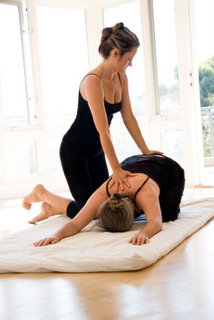 yoga child's pose To begin changing the way you react to stress, you’ll need to understand how it typically affects the body. If your mind interprets a stressful event as an emergency threat, it triggers an immediate response in the autonomic nervous system. Your stress response kicks in and activates the sympathetic nervous system (SNS). Your body is flooded with hormones like cortisol and norepinephrine, which heighten the senses, increase heart rate and blood pressure, and focus the brain’s activity. The parasympathetic nervous system (PNS), which is responsible for physical relaxation and emotional calm, becomes overwhelmed by this sympathetic response. With the sympathetic nervous system in charge and the parasympathetic overwhelmed, you are primed to respond with energy and focus, but also with anger, anxiety, and aggression.
Humans developed this primal reaction, known as fight-or-flight, so they could effectively fight off or flee from life-threatening danger. This important survival mechanism is useful when you need to slam on the brakes to prevent a car accident or run away from an attacker. But it’s overkill for most of the conflicts and challenges we face day to day.
While it’s easy to view life’s hassles as a threat to your expectations, sense of control, or ideals, it’s better for your health to temper that perception and instead see each stressor as a challenge you can handle. Even if an emergency exists entirely in your imagination, or if the threat is only to your feelings, it can still trigger the fight-or-flight stress cycle. Over time chronic stress takes a toll on the body and brain, leading to all kinds of health problems, including insomnia, depression, chronic pain, and cardiovascular disease.
adapted from Yoga Journal, Kelly McGonigal
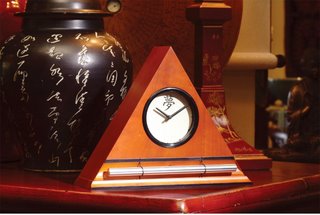 Tame your stress with a Zen Alarm Clock
Now & Zen
1638 Pearl Street
Boulder, CO 80302
(800) 779-6383
Posted in yoga, Yoga Timer, Yoga Timers by Now & Zen
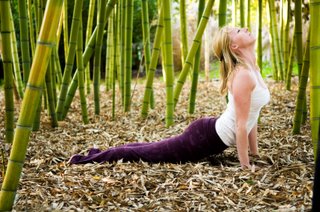 yoga For someone like Sue, who easily finds bliss in relaxation but avoids stress, developing the ability to stay present in the midst of difficult situations—but without trying to fight against or escape from them—is key. Rather than trying to hide from challenges, Sue has to learn to believe she can handle them. As Amy Weintraub, founder of LifeForce Yoga Healing Institute and the author of Yoga for Depression, puts it, “Sometimes it’s important to not simply remove ourselves from the stressful situation, but to feel it in our bodies. Acknowledge stress. Meet it. We can stay present without being controlled by it.”
For one of my students, Julie Good, a 38-year-old physician and mother of two young girls, the great teacher was Eka Pada Rajakapotasana (One-Legged King Pigeon Pose). When she first started yoga, it was her least favorite pose. “My strategy was to grit my teeth and tolerate it, tense my whole body, and try to hold myself up off the floor.” Although her resistance was an attempt to avoid the intense sensation in her hip, the effect was quite different. “It was agonizing.”
One day, when Good explained why she hated Pigeon Pose, I encouraged her to stop fighting it. Good says, “I had been trying to protect myself by resisting. I thought, ‘If I let go, it’s going to get worse.’ But I let go, and it got better. When I wasn’t resisting, I learned to breathe into the discomfort.” By staying with the pose, she learned that she could choose to stay in a difficult situation and the discomfort would dissipate.
adapted from Yoga Journal, by Kelly McGonigal
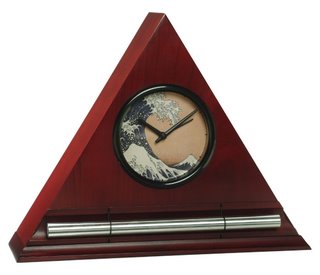 yoga
Now & Zen
1638 Pearl Street
Boulder, CO 80302
(800) 779-6383
Posted in yoga, Yoga Timer, Yoga Timers by Now & Zen
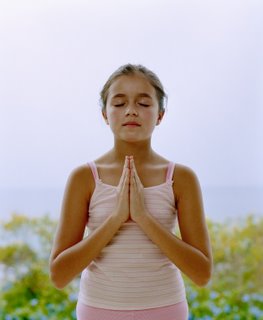 teaching children to breath One of the simplest and most powerful practices you can teach your children is breath awareness. Diaphragmatic breathing, the relaxed, deep breathing that activates the diaphragm muscle, is the prerequisite for the subtle practices of the yoga tradition. It activates the parasympathetic nervous system, which induces a state of calm, improves focus, and reduces anxiety.
Pandit Tigunait’s son, Ishan, recalls, “When I was little, Swami Rama used to call me ‘Mr. Distraction.’ I’d flit around from thing to thing, and I was always on the move. By nighttime I was so exhausted, I couldn’t sleep.” Tigunait began to teach Ishan diaphragmatic breathing, placing a sandbag on his abdomen and lower ribs and asking him to raise the bag on each inhalation, and lower it on each exhalation.
“Maybe now a kid like me would get labeled ADHD,” Ishan observes, “but the sandbag breathing completely changed that.” After a few months, diaphragmatic breathing became automatic, he recalls. His focus began to improve, and so did the quality of his sleep. Next, he was taught how to sit quietly for a few minutes, focusing on the touch of the breath at the tip of his nostrils. As he grew older, his father introduced him to mantra meditation. Looking back, Ishan says, “The immersion in a spiritual lifestyle from a young age makes you feel so grounded in your inner personality that you naturally pursue whatever you believe to be your calling. You get that grounding from the fundamentals— sitting, breathing, asana—but even more important, it comes from the introduction to yourself that you get from meditation. You begin to see that a calm and disciplined mind is your most valuable asset.”
adapted from Yoga Journal by Shannon Sexton
 meditation supplies and tools for yoga
Now & Zen
1638 Pearl Street
Boulder, CO 80302
(800) 779-6383
Posted in yoga, Yoga Timer, Yoga Timers by Now & Zen
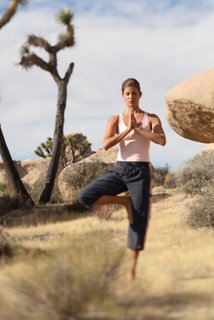 yoga “While yoga can certainly help you recover from injury, like any physical activity, it can also lead to one if you’re not careful. According to the U.S. Consumer Product Safety Commission, there were an estimated 5,000 reported injuries due to yoga practice in 2005. “Distinguishing pain from a really good stretch takes a little practice,” explains Baxter Bell, M.D., a Petaluma, California-based yoga teacher, physician, and medical acupuncturist. He offers these tips to reduce your risk of getting hurt.
1. Talk to your teacher before class. Your instructor can help you modify your poses to accommodate an injury, but only if he or she knows you have one. If your instructor doesn’t have good advice on how to approach your special need, consider looking for another instructor.
2. Don’t exceed your limits. Beginning students, especially, tend to push a little too hard.
3. Pay attention to hot spots. The knees, lower back, sacrum, wrists, and shoulders — observe all of these areas as you practice.
4. Use props. In a pose like Triangle, a block can help you come out of the depth of the pose.
5. Talk to your teacher after class. If something hurts as a result of your practice, let your teacher know so that the next class will be better.
6. Take post-practice care. Ice any sore spots or consider taking a natural anti-inflammatory.
adapted from Body + Soul, October 2007
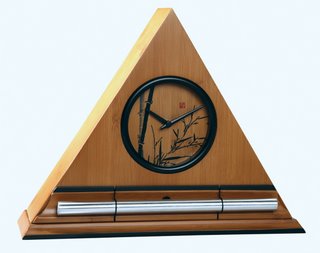 Zen Clock with Gentle Chime for Yoga and Meditation
Now & Zen
1638 Pearl Street
Boulder, CO 80302
(800) 779-6383
Posted in Well-being, yoga, Yoga Timer, Yoga Timers by Now & Zen
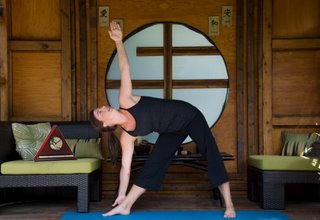 yoga tips from the masters New to yoga? Notable yoga experts offer these 5 tips.
1. “Along with your yoga mat and your towel, bring a sense of humor to class. Students who get hung up on doing everything ‘perfectly’ are less likely to come back.”
–Seane Corn, creator of the Vinyasa Flow Yoga DVD series and national yoga ambassador for YouthAIDS
2. “Don’t force your way into yoga. Adapt your movements to accommodate your level of strength and stamina, so that you avoid injury and feel comfortable in every pose.”
–Baron Baptiste, founder of Baptiste Power Vinyasa Yoga
3. “Watch out for what I call ‘self mutilation’ — spending your time talking to yourself about what you can’t do. This will make your practice dismal. The more you stay connected to feeling the pose — to breathing into the pose — the better your experience will be.”
–Ana Forrest, founder of Forrest Yoga
4. “To jump-start your practice, go on a yoga retreat. By temporarily shelving all the distractions in your normal life, you’ll learn enough in just two or three days to make a big difference in your weekly yoga class experience.”
–Richard Faulds, former president of Kripalu
5. “When you get to class, keep an open mind. Tune in to your own infinite possibilities. And drink water.”
–Guruatma Singh Khalsa, co-owner of Franklin Yoga and yoga instructor for 32 years
adapted from Body + Soul, by Abbie Barrett
Use our unique “Zen Clock” which functions as a Yoga Timer. It features a long-resonating acoustic chime that brings your meditation or yoga session to a gradual close, preserving the environment of stillness while also acting as an effective time signal. Our Yoga Timer & Clock can be programmed to chime at the end of the meditation or yoga session or periodically throughout the session as a kind of sonic yantra. The beauty and functionality of the Zen Clock/Timer makes it a meditation tool that can actually help you “make time” for meditation in your life. Bring yourself back to balance.
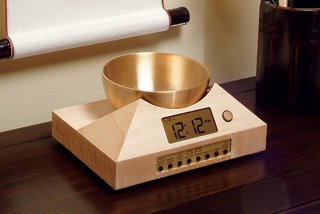 yoga tools for wellness Now & Zen – The Yoga Timer Store
1638 Pearl Street
Boulder, CO 80302
(800) 779-6383
Posted in Well-being, yoga, Yoga Timer
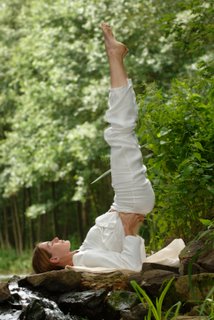 yoga lying down A harmonizing practice for people in recovery
As you practice the following sequence, remember to honor your limitations, going to your edge with love and acceptance rather than judgment and discouragement. If you are unable to move into a posture at this time, focus on breath-ing deeply as you think about the affirmation—that in itself is healing. At the end of the routine, take some time to write down your thoughts.
Legs-up-the-Wall Pose Viparita Karani
Benefits Relaxes the legs and feet by relieving pressure.
Affirmation As I relax, I gain insight, clarity, and ease.
Sit on the floor next to a wall, with your knees bent and your left hip and side barely touching the wall. Using your hands for support, slowly lie back and swivel your hips so that you can slide both legs up the wall and your buttocks press against it. You can let your arms relax either at your sides or on your belly.
Straighten your legs. (If you have tight hamstrings, bend your knees or move your buttocks farther away from the wall.) Hold the pose and breathe. You can place a pillow under your head or lower back for more support.
adapted from Yoga Journal by Annalisa Cunningham, author of Healing Addiction with Yoga
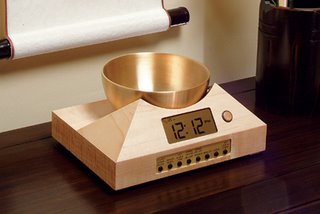 Meditation Timers and Chime Clocks Now & Zen
1638 Pearl Street
Boulder, CO 80302
(800) 779-6383
Posted in Chime Alarm Clocks, yoga, Yoga Timer, Yoga Timers by Now & Zen
Give your feet just a little attention, and your whole body will feel better.
They hold us up all day long, they get us everywhere we need to go, and they connect our bodies to the earth. Some yoga teachers even call the feet the “roots” of the body.
Yet for all that our feet do for us, we don’t do much for them in return. We cram them into tight shoes, pound along on them all day, and generally ignore them unless they’re giving us serious trouble. The result is that at some point in their lives 7 of 10 people will suffer from foot problems, many of which are entirely preventable.
Robert Kornfeld, a holistic podiatrist in New York City, says he’s seen it all: people hobbling in with knobby, inflamed bunions and hammer toes, the dull throb of tendinitis, the achy soles of plantar fasciitis.
Those aren’t just niggling minor ailments; some foot problems can alter the foot’s structure and trigger pain elsewhere in the body. “I sing that song to my patients,” Kornfeld says: “‘The foot bone’s connected to the leg bone…'” In fact, experts say one of the most important reasons to treat foot problems early is to prevent them from throwing the knees, hips, back, and shoulders out of whack.
And one of the best ways to take care of your feet is with yoga. “I recommend that all my patients start yoga immediately,” Kornfeld says. “When you treat foot problems with yoga, you end up treating back pain, hip pain, all kinds of structural problems. Not only does it stretch out the muscles and lead to a greater range of motion, but it helps heal the root issue of inflammation as well.”
In fact, yoga gives feet a healthy workout that they rarely get any other way. “You couldn’t ask for a better set of tools to reawaken the feet,” says yoga teacher Rodney Yee, of the Piedmont Yoga Studio in Oakland, California. Below, some tips from the experts on how best to use yoga to prevent or treat foot pain.
Work Those Toes
One great way to limber up stiff, underused feet is to work on the articulation of the toes, which in most of us have lost at least some of their range of motion, says Tias Little, director of YogaSource in Santa Fe, New Mexico. Little considers the feet so important he not only focuses on them in his regular sessions, but has also created a separate class he calls Feet as Foundation. “Think of the way babies spread their toes and crawl by pushing off with them,” he says. “We need to regain that.” Little guides students through a routine in which they try to move each toe separately from the others and practice picking things up with their toes.
In standing poses, focus on elongating the toes to stretch the sole of your foot. Press down into your heels at the same time you press forward with the base of the big and little toes, grounding forward with the ball of the foot. “Think of it as stretching the sole of the foot like a drum,” Little says. This can improve circulation, pumping blood and lymph back toward your heart, and potentially stave off edema and varicose veins.
Stretch for Strength
Any pose that stretches the arch or the sole of the foot improves flexibility and loosens tension. Little suggests a simple exercise to warm up your feet before yoga: Stand on a tennis ball and roll it back and forth under your foot, working the toes, the ball of the foot, the arch, and the heel. Virasana (Hero Pose) stretches the top of the foot and elongates the arch, while kneeling with the toes tucked under is the best way to lengthen the plantar muscles on the sole of the foot, which, when contracted, can become inflamed, leading to plantar fasciitis.
Little also teaches students to go back and forth between Vajrasana (Thunderbolt Pose) and what he calls “broken toe pose.” From Vajrasana, lift your hips, curl your toes under and lift your heels, and then lean back so your weight rests on the “necks” (not the pads) of your toes.
adapted from Yoga Journal by Melanie Haiken
Posted in yoga, Yoga Timer, Yoga Timers by Now & Zen
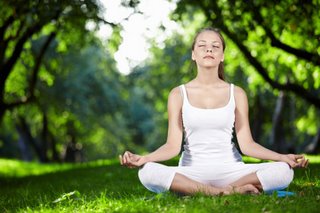 Lake Meditation Practice limitless awareness and let yourself be as infinite as the heavens.
This is the second guided meditation in a series that started yesterday:
Move your attention from the mountain to the lake. Crystal-clear, turquoise-hued lakes toward the peak of some mountains in the Himalayas are called “sky lakes” because they so perfectly reflect the sky above. Protected by the higher peaks and trees, the surface of such a lake is smooth and calm. You don’t need to visualize yourself as a lake. Rather, contemplate the lake and its quality of reflectivity. Notice how the water is translucent, allowing you to see into its depths. Notice how it is also as reflective as a mirror, so you can see your face and the sky above on its surface. As you imagine yourself looking into the surface of the water, notice how the water reflects only what is there, neither editing out nor adding in anything. The water reflects the dark, ominous storm clouds and the fluffy white clouds equally. When birds fly overhead, the water reflects them; yet once they are gone from the sky, it shows no trace of them.
When the waves (vritti) are calmed, the mind (citta) has this dual ability of the lake to be both translucent and reflective. Once your mind is stabilized, you can turn your attention to it. Imagining your mind to be as translucent and reflective as the sky lake may bring forth thoughts, feelings, and emotions, but you can simply reflect what arises without judging or comparing, and without editing out anything through aversion or denial. Perceptions of sound, smell, or touch may arise, and, free of grasping and pushing away, you can simply reflect. In this way, destructive or unwholesome patterns can be seen, so that their power over you is lessened. Attachments are loosened. Breathing in, see yourself as the water of the sky lake; breathing out, reflect.
adapted from Yoga Journal by Frank Jude Boccio
 Meditation Timers with Chime, a natural acoustic sound not electronic Now & Zen
1638 Pearl Street
Boulder, CO 80302
(800) 779-6383
Posted in yoga, Yoga Timer, Yoga Timers by Now & Zen
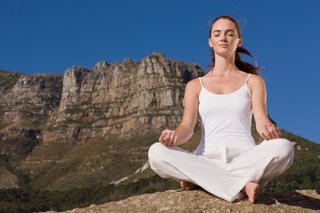 mindfulness practice Practice limitless awareness and let yourself be as infinite as the heavens.
This is the first guided meditation in a series of three that starts today:
Create a comfortable, stable, supported seated posture. If sitting on the floor, support your knees with pillows or blocks. Sit upright and close your eyes. Let your breath flow naturally, without manipulating it. Rest your attention on the rising and falling of your belly or chest.
Imagine a majestically tall mountain. Contemplate how solid and stable the mountain is throughout the changing seasons. At times the mountain may be clouded over, its peak covered in fog. Sometimes the mountain is assaulted with thunder, lightning, and heavy rains. Sometimes it rises into a clear blue sky or a few white puffy clouds. At times it is covered in snow, at times with lush foliage, and at other times it is barren. Throughout, it remains stable and unaffected by the changing weather or seasons. Let this stable quality of “mountainness” nourish your concentration and your ability to sit through all the varying experiences that arise while practicing this meditation.
Now feel your posture to be like a mountain. Breathing in, see yourself as a mountain; breathing out, feel stable. Some thoughts and emotions are like storms, others like sunshine. Your mind can be clouded over or clear and bright, but through it all, you can still sit solid.
adapted from Yoga Journal by Frank Jude Boccio
Although meditation can be done in almost any context, practitioners usually employ a quiet, tranquil space, a meditation cushion or bench, and some kind of timing device to time the meditation session. Ideally, the more these accoutrements can be integrated the better. Thus, it is conducive to a satisfying meditation practice to have a timer or clock that is tranquil and beautiful. Using a kitchen timer or beeper watch is less than ideal.
 Portable Meditation Timer with Chime And it was with these considerations in mind that we designed our digital Zen Alarm Clock and practice timer. This unique “Zen Clock” features a long-resonating acoustic chime that brings the meditation session to a gradual close, preserving the environment of stillness while also acting as an effective time signal.
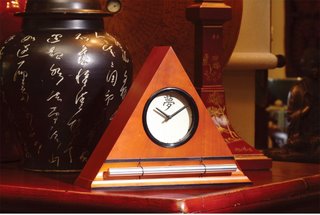 meditation and yoga tools Now & Zen – The Portable Meditation Timer Store
1638 Pearl Street
Boulder, CO 80302
(800) 779-6383
Posted in yoga, Yoga Timer, Yoga Timers by Now & Zen
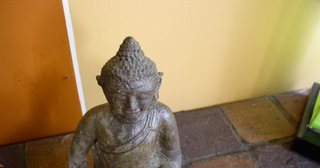 buddha When you deny the reality of life, you appreciate it less. Meditate on the Buddha’s Five Remembrances and rediscover the magic of life just as it is.
Ignorance, or avidya, is a root cause of suffering, according to Patanjali’s Yoga Sutra (II.5). But the ignorance Patanjali refers to is less a lack of knowledge than an almost willful ignoring of reality. Today we call it denial. For instance, we may intellectually know that all things change, yet we desperately deny this truth—a denial that leads to anxiety, fear, and confusion.
At a recent lecture, I led a group of interfaith seminarians in the contemplation of the Five Remembrances, Buddha’s teaching on impermanence, aging, health, change, and death. Afterward, one of the students asked, “Isn’t this just negative thinking?” On the contrary, the Five Remembrances is what the Buddha offers to awaken you from denial, to cultivate gratitude and appreciation for the life you’ve been given, and to teach you about nonattachment and equanimity.
One way of practicing the Five Remembrances is through something Buddhist master Thich Nhat Hanh calls hugging meditation. When your partner or children leave for work or school, hug each other for three full breaths, and remind yourself of the Fourth Remembrance: “All that is dear to me and everyone I love are of the nature to change. There is no way to escape being separated from them.” If you’re having a disagreement with someone, remind yourself, before getting swept away by heated emotions, of the Fifth Remembrance: “My actions are my only true belongings. I cannot escape the consequences of my actions. My actions are the ground upon which I stand.” None of this means you should be passive or reluctant to advocate your views. Instead the meditation helps you respond more skillfully with awareness of how things truly are rather than from conditioned reactions.
The Five Remembrances
I like this version of the Buddha’s Five Remembrances, offered by Thich Nhat Hanh in The Plum Village Chanting Book (Parallax Press, 1991).
I am of the nature to grow old. There is no way to escape growing old.
I am of the nature to have ill health. There is no way to escape ill health.
I am of the nature to die. There is no way to escape death.
All that is dear to me and everyone I love are of the nature to change. There is no way to escape being separated from them.
My actions are my only true belongings. I cannot escape the consequences of my actions. My actions are the ground upon which I stand.
Frank Jude Boccio (www.judekaruna.net) is the author of Mindfulness Yoga. He teaches yoga in New Paltz, New York, and leads Mindfulness Yoga sessions throughout North America.
adapted from Yoga Journal by Frank Jude Boccio
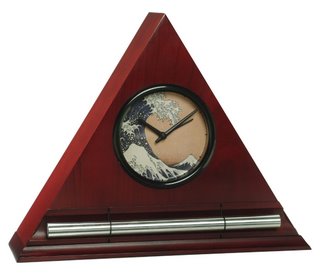 gentle chime timer for mindfulness practices Now & Zen
1638 Pearl Street
Boulder, CO 80302
(800) 779-6383
Posted in yoga, Yoga Timer, Yoga Timers by Now & Zen
« Previous Page — « Previous Entries
Next Entries » — Next Page »
|
|
|
|